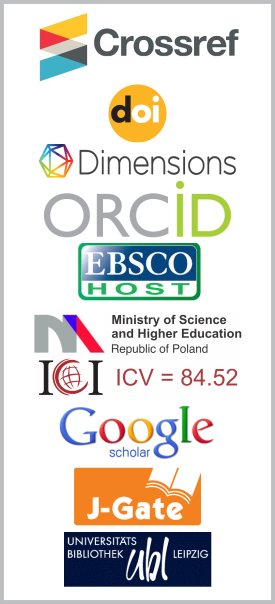Numerical Simulation of Propagation of Unsteady Tribrachial Flames in Laminar Non-Premixed Jets
DOI:
https://doi.org/10.26713/jims.v10i3.1205Keywords:
Combustion, Numerical simulation, Tribrachial flame, Laminar flame, Flame propagationAbstract
The characteristics of propagating Tribrachial Flames in non-premixed laminar jets have been investigated computationally, using a two dimensional model in ANSYS FLUENT 16.0. The edge of the propagating flame in a laminar jet regime has a Tribrachial flame structure: a lean premixed flame, a rich premixed flame, and a diffusion flame, all extending from a single location. This is usually observed in non-premixed combustion such occurring in burners. Such flames are important in the interaction of heat and mass transfer with chemical reactions in gas turbines and commercial burners. A computational study has been performed to assess the laminar tribrachial flame propagation in methane jets and to compare the tribrachial flame propagation for various flow rates. With an increase in the fuel jet Reynolds number, the tribrachial point is found to move closer to the nozzle. Additionally the tribrachial point is found to become larger with an increase in the Reynolds number.Downloads
References
J.W. Dold, Flame propagation in a non-uniform mixture: analysis of a slowly varying triple flame, Combustion and Flame 76 (1989), 71 – 88.
N. Ishikawa, Flame structure and propagation through an interface of layered gases, Combustion Science and Technology 31 (1983), 109 – 117.
Y.S. Ko and S.H. Chung, Propagation of unsteady tribrachial flames in laminar non-premixed jets, Combustion and Flame 118 (1999), 151 – 163.
B.J. Lee, J.S. Kim and S.H. Chung, Effect of dilution on the liftoff of non-premixed jet flames, Twenty-Fifth Symposium (International) on Combustion, The Combustion Institute, 1994, 25 (1), 1175 – 1181.
H. Phillips, Flame in a Buoyant methane layer, Proceedings of Combustion Institute 10 (1965), 1277 – 1283.
G.R. Ruetsch, L. Vervisch and A. Liñán, Effects of heat release on triple flames, Physics of Fluids 7(6) (1995), 1447 – 1454.
Downloads
Published
How to Cite
Issue
Section
License
Authors who publish with this journal agree to the following terms:- Authors retain copyright and grant the journal right of first publication with the work simultaneously licensed under a CCAL that allows others to share the work with an acknowledgement of the work's authorship and initial publication in this journal.
- Authors are able to enter into separate, additional contractual arrangements for the non-exclusive distribution of the journal's published version of the work (e.g., post it to an institutional repository or publish it in a book), with an acknowledgement of its initial publication in this journal.
- Authors are permitted and encouraged to post their work online (e.g., in institutional repositories or on their website) prior to and during the submission process, as it can lead to productive exchanges, as well as earlier and greater citation of published work.




